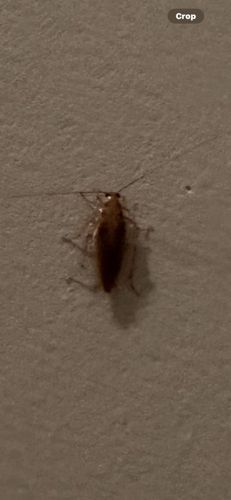German Cockroach
Scientific Name: Blattella germanica
Order & Family: Blattodea, Blattellidae
Size: Typically 1.1 to 1.6 cm (0.43 to 0.63 inches) long.

Natural Habitat
Primarily indoor pests, found in warm, humid environments, especially kitchens and bathrooms. They prefer tight spaces and are commonly found in commercial settings like restaurants and hotels, as well as residences.
Diet & Feeding
Omnivorous scavengers; feeds on almost anything, including food scraps, crumbs, pet food, grease, and even non-food items like soap, glue, and toothpaste.
Behavior Patterns
Nocturnal; hides in cracks and crevices during the day. Known for rapid reproduction and can infest homes quickly. They are attracted to food sources and moisture. Females carry egg cases (oothecae) until just before hatching.
Risks & Benefits
Risks: Can carry and spread bacteria (like Salmonella and E. coli), viruses, fungi, and parasitic worms. They can trigger allergies and asthma attacks in sensitive individuals, especially children. Their presence can contaminate food and surfaces. Not known to have significant benefits in human environments. Benefits: In natural ecosystems they can be decomposers, but within human habitation, they are largely considered pests.
Identified on: 8/27/2025